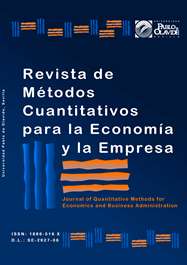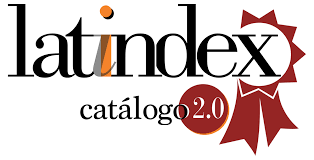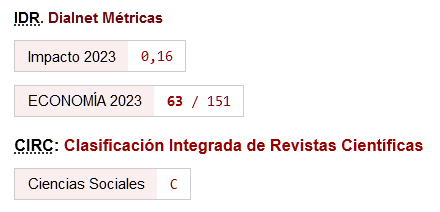Packaging and quality improvements
DOI:
https://doi.org/10.46661/revmetodoscuanteconempresa.3624Keywords:
packaging, quality improvements, telecommunications, regulationAbstract
This study presents the competition beyond a single product market where a multi-product firm competes with monoproduct rivals through the use of different bundling strategies that impact the firms' incentives to make quality improvements in different ways. The pure bundling strategy can make the multi-product firm invest in quality improvements when the associated costs are comparatively low, and the additional utility of quality improvement is relatively high, but it discourages single-product firms from improving quality. In the case of mixed bundling, this result inevitably happens in the most competitive market, and is probably found in the less competitive market when markets are not so different in competitive intensity. Therefore, both bundling strategies affect the consumer surplus when the two markets are significantly different in the intensity of competition due to the negative influence of the market distortions after interrelating the two markets.
Downloads
References
Armstrong, M. (2011). Bundling revisited:substitute products and inter-firm discounts. Economics Series Working Papers 574, University of Oxford.
Avenali, A., D’Annunzio, A., & Reverberi, P. (2013). Bundling, competition and quality investment: a welfare analysis. Review of Industrial Organization, 43(3), 221-241.
Choi, J.P. (1996). Preemptive R&D, rent dissipation, and the “Leverage Theory”. Quarterly Journal of Economics, 111(4), 1153-1181.
Choi, J.P. (2004). Tying and innovation: A dynamic analysis of tying arrangements. Economic Journal, 114(492), 83-101.
Gans, J.S., & King, S.P. (2006). Paying for loyalty: product bundling in oligopoly. Journal of Industrial Economics, 54(1), 43-64.
Granier, L., & Podesta, M. (2010). Bundling and mergers in energy markets. Energy Economics, 32(6), 1316-1324.
Heeb, R. (2003). Innovation and vertical integration in complementary markets. Journal of Economics and Management Strategy, 12(3), 387-417.
Krämer, J. (2009). Bundling vertically differentiated communications services to leverage market power. Journal of policy, regulation and strategy for telecom-munications, 11(3), 64-74.
Matutes, C., & Regibeau, P. (1992). Compatibility and bundling of complementary goods in a duopoly. Journal of Industrial Economics, 40(1), 37-54.
Nalebuff, B. (2004). Bundling as an entry barrier. Quarterly Journal of Economics, 119(1), 159-187.
Reisinger, M. (2006). Product bundling and the correlation of valuations in duopoly. Discussion papers in economics, University of Munich.
Rennhoff, A.D., & Serfes, K. (2009). The role of upstream-downstream competition on bundling decisions: should regulators force firms to unbundle? Journal of Economics & Management Strategy, 18(2), 547-588.
Thanassoulis, J. (2007). Competitive mixed bundling and consumer surplus. Journal of Economics & Management Strategy, 16(2), 437-467.
Thanassoulis, J. (2011). Is multimedia convergence to be welcomed? Journal of Industrial Economics, 59(2), 225-253.
Tirole, J. (1988). The theory of industrial organization. MIT press.
Venkatesh, R., & Kamakura, W. (2003). Optimal bundling and pricing under a monopoly: Contrasting complements and substitutes from independently valued products. Journal of Business, 76(2), 211-231.
Wauthy, X. (1996). Quality choice in models of vertical differentiation. Journal of Industrial Economics, 44(3), 345-353.
Downloads
Published
How to Cite
Issue
Section
License
Copyright (c) 2020 Journal of Quantitative Methods for Economics and Business Administration

This work is licensed under a Creative Commons Attribution-ShareAlike 4.0 International License.
Submission of manuscripts implies that the work described has not been published before (except in the form of an abstract or as part of thesis), that it is not under consideration for publication elsewhere and that, in case of acceptance, the authors agree to automatic transfer of the copyright to the Journal for its publication and dissemination. Authors retain the authors' right to use and share the article according to a personal or instutional use or scholarly sharing purposes; in addition, they retain patent, trademark and other intellectual property rights (including research data).
All the articles are published in the Journal under the Creative Commons license CC-BY-SA (Attribution-ShareAlike). It is allowed a commercial use of the work (always including the author attribution) and other derivative works, which must be released under the same license as the original work.
Up to Volume 21, this Journal has been licensing the articles under the Creative Commons license CC-BY-SA 3.0 ES. Starting from Volume 22, the Creative Commons license CC-BY-SA 4.0 is used.










